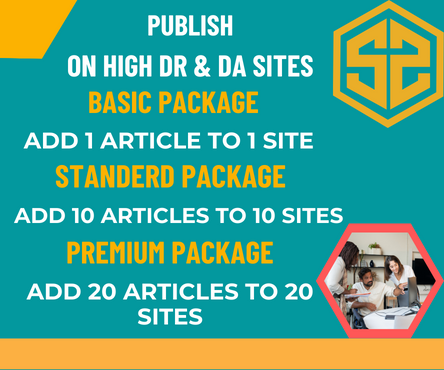Website development is an essential part of establishing an online presence, whether you are running a small personal blog or a large e-commerce platform. The process involves planning, designing, coding, and launching a website that meets user needs and delivers a seamless experience. In this guide, we’ll explore the critical steps involved in website development and best practices to ensure your site stands out in a crowded digital landscape.
1. Planning and Research
Before diving into the technical aspects of website development, it’s crucial to start with thorough planning. The planning phase lays the foundation for the entire development process.
Define Your Goals: What do you want your website to achieve? Whether it’s generating leads, providing information, or selling products, defining your website’s purpose will guide every decision during development.
Identify Your Target Audience: Understanding who will use your website helps you design an interface that meets their needs. Conduct research on user demographics, preferences, and behaviors to create a user-centric website.
Competitor Analysis: Analyze websites of your competitors to understand what works and what doesn’t. Identify industry trends and features that could enhance your website.
2. Choosing the Right Technology Stack
The technology stack determines how your website will be built and function. It includes the programming languages, frameworks, databases, and hosting platforms that power your site.
Front-End Development: This is the part of the website that users interact with. Popular technologies for front-end development include HTML, CSS, and JavaScript, along with frameworks like React, Angular, and Vue.js.
Back-End Development: The back-end handles data processing, database management, and server-side logic. Common back-end technologies include Node.js, Ruby on Rails, Django (Python), and PHP, with databases such as MySQL, PostgreSQL, and MongoDB.
Content Management Systems (CMS): For non-developers, a CMS like WordPress, Joomla, or Drupal makes it easy to manage website content without coding knowledge.
Web Hosting and Domain Name: Choosing a reliable web hosting provider and securing a memorable domain name are essential steps. Options like Bluehost, SiteGround, and AWS offer different hosting plans to fit various needs.
3. Designing a User-Friendly Interface
The design of your website plays a significant role in user experience and engagement. A well-designed website should be visually appealing, easy to navigate, and responsive across all devices.
Responsive Design: A responsive website adapts to different screen sizes, ensuring it looks great on desktop, tablet, and mobile devices. This is crucial as mobile traffic continues to rise.
User Interface (UI) and User Experience (UX): The UI refers to the layout and design elements that users interact with, while UX focuses on the overall experience of navigating the website. A good website design focuses on both, ensuring that the user journey is intuitive and enjoyable.
Visual Hierarchy: Organize content in a clear and structured manner. Important information should be easy to find, with clear headings, call-to-action buttons, and a balanced layout.
Color Scheme and Typography: Use a consistent color palette and legible fonts to enhance readability and aesthetic appeal. Your design should reflect your brand identity and create a cohesive look across all pages.
4. Coding and Development
Once the design and technology stack are in place, it’s time to move into the development phase, where your website’s code comes to life.
HTML and CSS: HTML forms the structure of the web page, while CSS controls the layout and design. Together, they ensure your website is visually appealing and accessible.
JavaScript for Interactivity: JavaScript is used to add interactive elements to your website, such as forms, animations, or dynamic content. It helps improve user engagement and creates a more dynamic browsing experience.
Backend Development: Write the server-side code necessary for your website to process data, manage databases, and respond to user actions. Frameworks like Express (Node.js) or Django (Python) can help streamline backend development.
Database Integration: If your website stores and manages data, integrating a database is essential. Use SQL databases like MySQL or NoSQL databases like MongoDB, depending on your website’s requirements.
5. Testing and Quality Assurance
Testing ensures that the website works as expected and that there are no bugs or issues affecting user experience. Testing should be thorough and include:
Functionality Testing: Test all interactive elements (forms, buttons, links) to ensure they work properly.
Cross-Browser Compatibility: Test the website on different browsers (Chrome, Firefox, Safari, Edge) to ensure consistency in appearance and functionality.
Mobile Testing: Make sure the website is mobile-friendly by testing it on various devices and screen sizes.
Performance Testing: Check page load speeds, responsiveness, and resource usage to ensure your website performs well, especially for users with slower internet connections.
6. Launching Your Website
Once the website is thoroughly tested, it’s time to launch. Before going live, ensure everything is in place:
- SEO Optimization: Optimize your website for search engines by using the right keywords, meta tags, and proper URL structures.
- Analytics Setup: Install tools like Google Analytics to track website traffic and user behavior.
- Security: Implement SSL certificates to ensure data security and boost your site’s credibility.
After launching, monitor the website’s performance and make adjustments as needed.
7. Maintenance and Updates
Website development is not a one-time job; continuous maintenance is required to ensure that your website runs smoothly.
Regular Content Updates: Keep your website’s content fresh and relevant to engage users and improve search engine rankings.
Security Patches: Stay on top of security updates and patches to protect your site from vulnerabilities.
Monitor Performance: Regularly check website analytics to understand user behavior, and optimize the site for better performance.
Conclusion
Website development is a multifaceted process that requires careful planning, the right technology, and continuous optimization. By following these key steps and best practices, you can build a website that not only meets your goals but also provides an excellent user experience. Whether you’re building a personal blog or a complex e-commerce platform, a well-developed website is crucial to success in today’s digital world.
